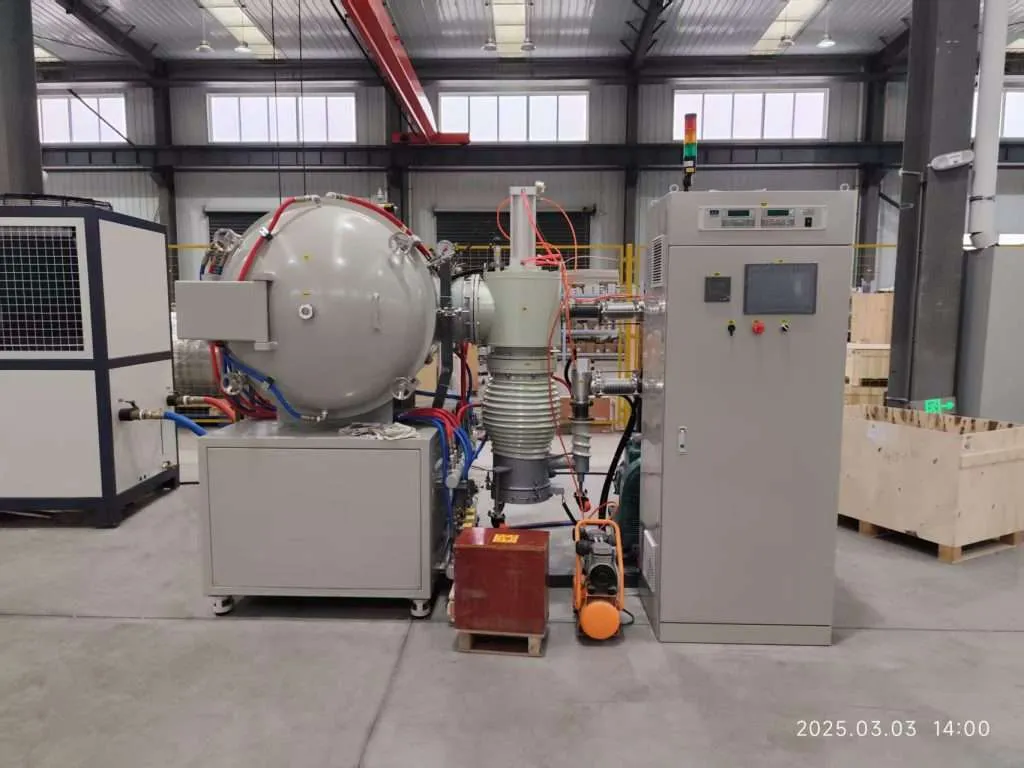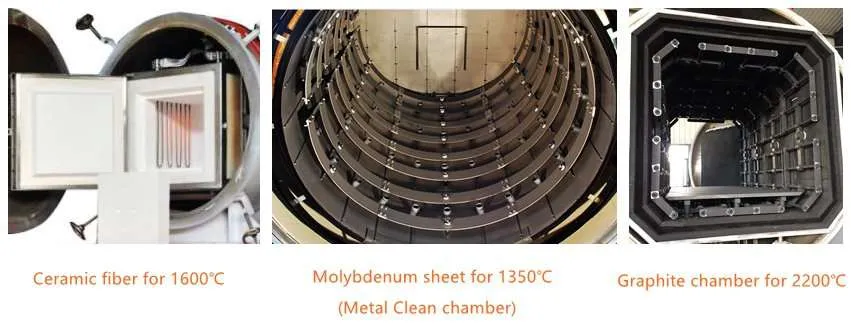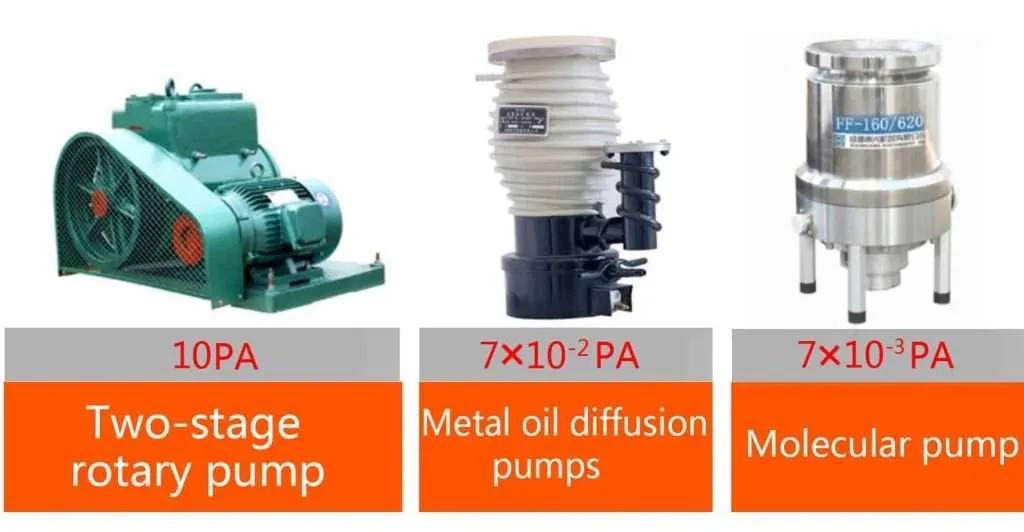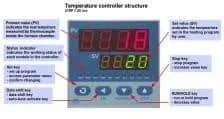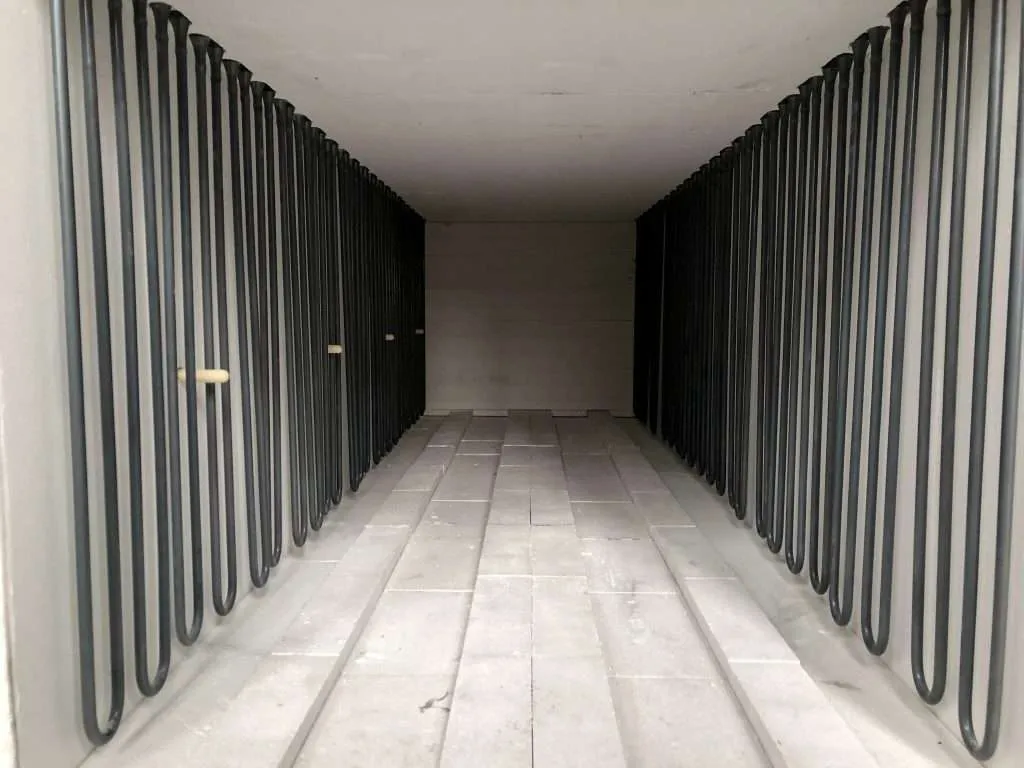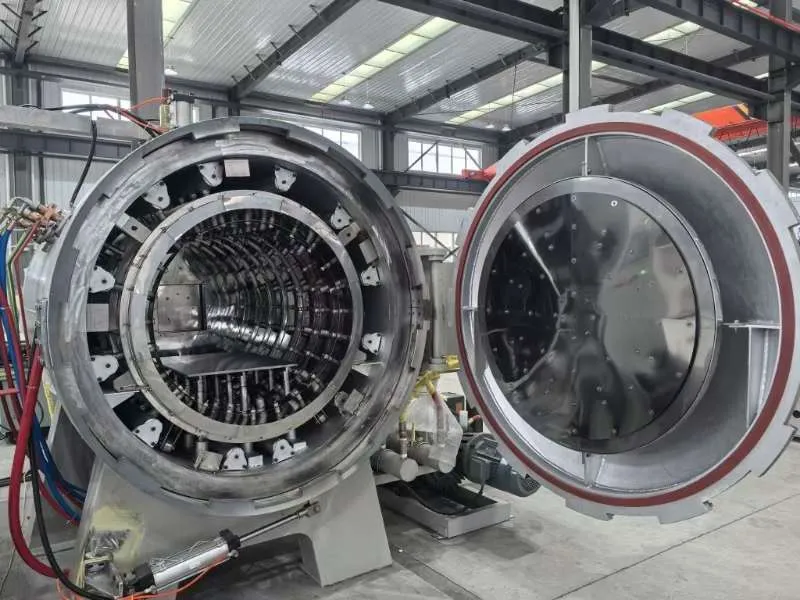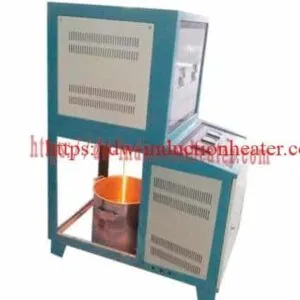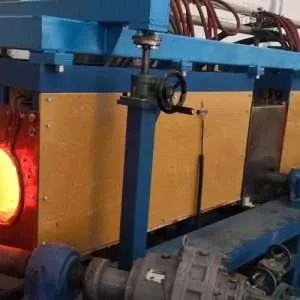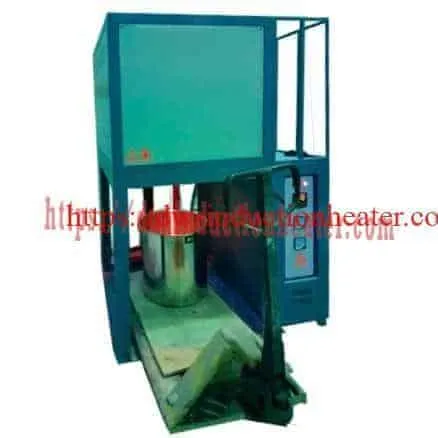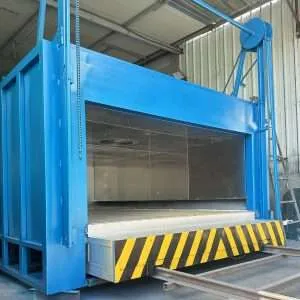-
1/4
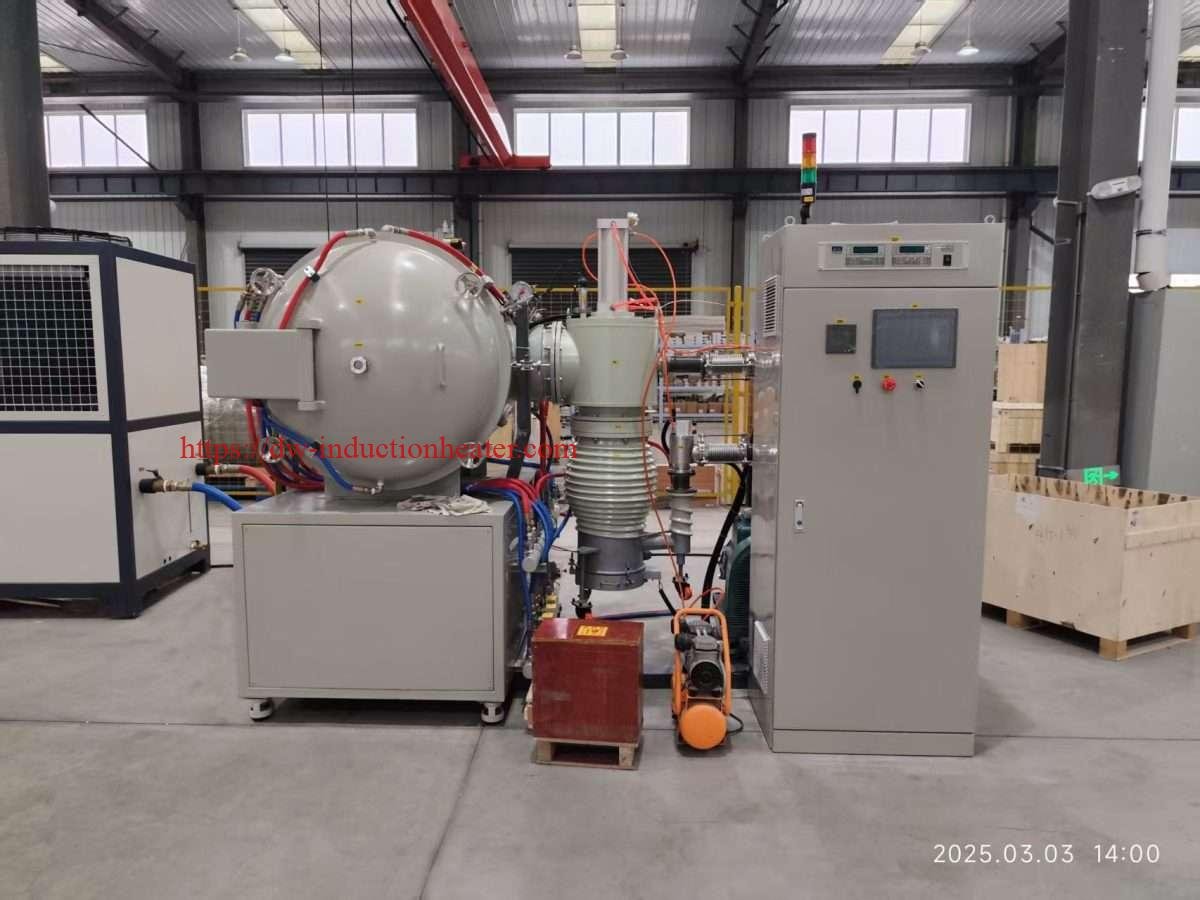
-
2/4

-
3/4

-
4/4
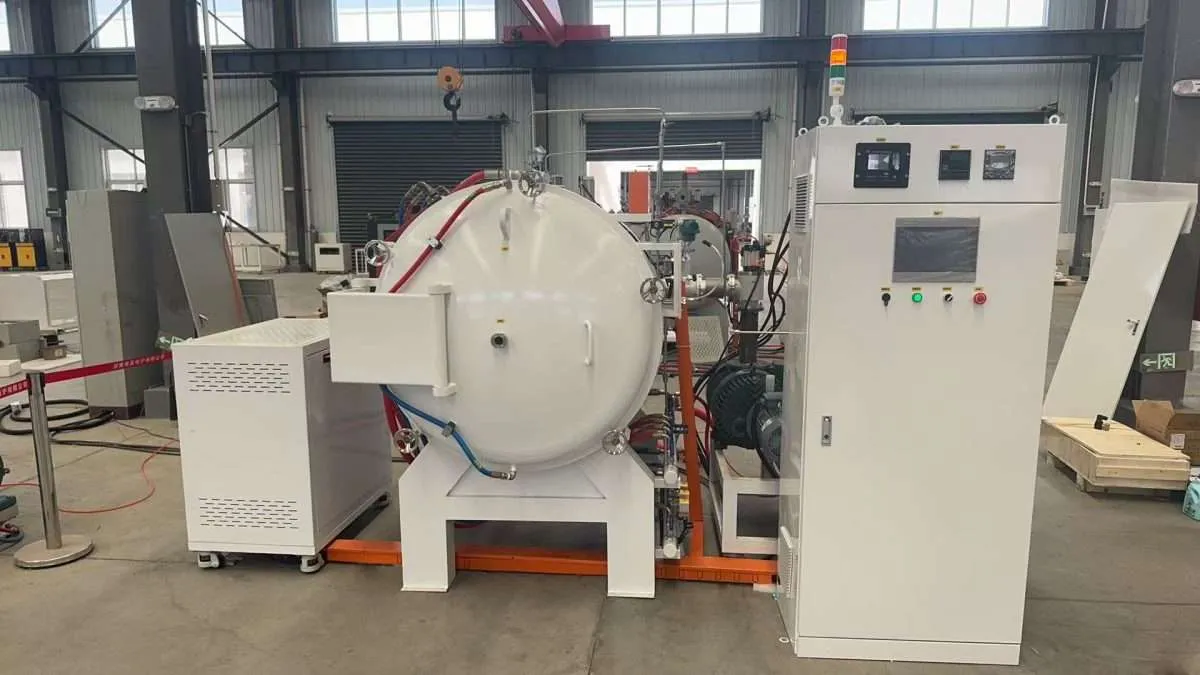
Vacuum Brazing Furnace-Vacuum Atmosphere Brazing Furnace
Vacuum Furnace-Vacuum Atmosphere Brazing Furnace Solutions for High-Purity Metal Joining
In the world of advanced manufacturing and high-performance engineering, the integrity of a metal joint can make all the difference. For applications demanding unparalleled strength, cleanliness, and precision, Vacuum Atmosphere Brazing Furnaces stand out as a critical technology. These sophisticated systems offer a controlled environment that enables the creation of superior brazed joints, free from the contaminants and defects often encountered with conventional methods.
As industries demand cleaner, stronger, and more reliable metal joints, vacuum atmosphere brazing furnaces are quickly becoming the top choice for manufacturers worldwide. Whether you work in aerospace, medical device fabrication, electronics, or advanced tooling, understanding the advantages of vacuum atmosphere brazing technology can elevate your production standards and deliver superior results.
What is a Vacuum Atmosphere Brazing Furnace?
A Vacuum Atmosphere Brazing Furnace is a specialized industrial furnace designed to perform brazing operations under highly controlled conditions. The “vacuum” component refers to the furnace’s ability to evacuate atmospheric gases from its chamber, creating a near-perfect vacuum. This is crucial for preventing oxidation and contamination during the high-temperature brazing process.
The “atmosphere” aspect highlights the furnace’s capability to then introduce specific, controlled gases (typically inert gases like argon or nitrogen) at different stages of the cycle. This is most commonly used for precise, rapid cooling (gas quenching) of the brazed assembly, but can also be used for backfilling or maintaining partial pressures for specific applications. Essentially, it’s a system that leverages both vacuum and controlled atmospheres to achieve optimal brazing results.
How Does it Work? The Synergy of Vacuum and Controlled Atmospheres
The operation of a vacuum atmosphere brazing furnace is a precisely orchestrated sequence:
- Loading & Sealing: Parts to be joined, along with the braze filler metal, are carefully assembled and placed into the furnace chamber, which is then sealed.
- Evacuation (Vacuum Phase): A powerful vacuum pumping system (often multi-stage) removes air and other gases from the chamber. This creates a clean environment, minimizing oxygen and moisture that could react with the metals at high temperatures.
- Heating: Advanced heating elements (e.g., graphite, molybdenum) uniformly raise the temperature of the assembly to slightly above the melting point of the braze filler metal, all while maintaining the vacuum.
- Brazing (Soaking): Once the filler metal melts, it flows into the gaps between the base materials via capillary action. The assembly is held at this temperature for a specific duration (soak time) to ensure complete flow and metallurgical bonding.
- Cooling (Atmosphere Phase): This is where the “atmosphere” control becomes critical. After brazing, the furnace initiates a controlled cooling cycle. Often, this involves:
- Gas Quenching: The vacuum chamber is backfilled with a high-purity inert gas (like argon or nitrogen), which is then circulated at high velocity over the parts using powerful fans. This allows for rapid and uniform cooling, which is vital for achieving desired metallurgical properties and minimizing distortion.
- Venting & Unloading: Once the assembly has cooled to a safe temperature, the chamber is vented (often backfilled with inert gas to near atmospheric pressure) and the strong, clean, brazed components are unloaded.
Key Advantages of Using a Vacuum Atmosphere Brazing Furnace
The meticulous control offered by these furnaces translates into numerous benefits:
- Superior Joint Quality: Produces exceptionally clean, bright, strong, and often hermetically sealed joints, free from oxides and voids.
- Flux-Free Brazing: The vacuum environment eliminates the need for corrosive chemical fluxes for most materials, preventing flux entrapment and simplifying post-braze cleaning.
- Processing Reactive and Dissimilar Materials: Ideal for brazing oxygen-sensitive materials like titanium, zirconium, and certain stainless steels, as well as joining dissimilar metals and metal-to-ceramic components.
- Precise Process Control: Offers unparalleled control over temperature profiles (heating rates, soak times, cooling rates) and atmosphere, ensuring consistent and repeatable results.
- Enhanced Metallurgical Properties: Controlled cooling via gas quenching can optimize the microstructure and mechanical properties of both the joint and the base materials.
- Uniform Heating & Cooling: Minimizes thermal distortion, especially in complex or delicate assemblies.
- Improved Efficiency: Can often combine brazing with heat treatment processes like annealing or stress relieving, reducing overall production steps.
Applications Across Industries
The reliability and quality offered by vacuum atmosphere brazing make it essential in:
- Aerospace: Turbine blades, engine components, fuel systems, hydraulic lines, heat exchangers.
- Automotive: EGR coolers, turbochargers, fuel injectors, sensors.
- Electronics & Semiconductor: Vacuum tubes, X-ray tubes, microwave components, heat sinks.
- Medical Devices: Implants, surgical instruments, diagnostic equipment.
- Tooling: Carbide-tipped tools, wear-resistant components.
- Power Generation: Nuclear components, gas turbine parts.
- Research & Development: Creating high-integrity joints for new materials and prototypes.
|
High Temperature Lab Vacuum Furnace, 2200℃ Max. High Vacuum Brazing Furnace. This high temperature Vacuum Furnace is cost-effective. Max. vacuum 7×10-4Pa. Excellent uniformity, precise control for vacuum sintering, brazing, annealing, tempering and hardening, etc. It is used for ceramic materials, ceramic-metal composites, refractory metals, and alloy materials, as well as vacuum brazing of alloy tools and superhard materials. |
|
High Temperature Atmosphere Vacuum Furnace Applications: · Vacuum heat treatment – hardening, tempering, and annealing · Vacuum brazing · Sintering · Degassing Advantages of High Temperature Vacuum Furnace: · No surface oxidation or discoloration · Minimal distortion · Flux free brazing · Repeatable quality · Clean, safe, quiet and efficient All our vacuum furnaces can be used with either an inert gas or a reactive gas. The majority of products in our vacuum furnace range are available with either ceramic fiber, molybdenum, or graphite insulation. On request, a furnace with a graphite insulation chamber can be configured to safely operate at up to 2200°C. 3 types of Furnace Chamber for optional
Vacuum System: |
Customized high temperature vacuum furnace as below: (other sizes can be customized)
| Parameter | Specification |
|---|---|
| Model | DW-1200-M |
| Furnace Chamber Dimensions | 600 × 600 × 2300 mm (Alumina Ceramic) |
| Maximum Working Temperature | 1200°C |
| Long-term Working Temperature | 1100°C |
| Temperature Uniformity | ±5°C (within effective working zone) |
| Heating Rate | 0-20°C/min (adjustable) |
| Ultimate Vacuum | 7×10⁻³ Pa |
| Vacuum System |
Mechanical Pump: 25 L/s Molecular Pump: 1500 L/s Vacuum Gauge: Full-range ionization gauge |
| Power Supply | 380V, Three-phase five-wire system, Rated Power: 60 kW |
| Heating Elements | Molybdenum wire heaters with multi-zone control |
| Temperature Control |
PID Controller with program segment control Thermocouple: Type B |
| Cooling System |
Water-cooled (20 L/min) Closed-loop circulation system |
| Protective Gas | High-purity N₂/Ar (99.999% purity) |
| Control System |
PLC automatic control Touch screen HMI Data logging and export function |
| Safety Protection Devices |
Over-temperature protection Over-pressure protection Water flow protection Power failure protection Emergency stop |
| Magnetic Field Shielding | High magnetic permeability alloy shielding |
| Overall Dimensions | 1800 × 1500 × 2800 mm |
| Weight | Approx. 3500 kg |
| Process Atmosphere | Vacuum / Inert gas |
| Operation Mode | Fully automatic/manual optional |
| Workpiece Specifications |
Diameter: 4 mm Length: up to 200 mm |
| Application Field |
Magnetic materials sintering High-performance permanent magnet preparation |
Heating Wires High Temperature Vacuum Furnace up to 1200℃
|
Model |
Max Temp. |
Chamber size |
Heating element |
Capacity (L) |
Power (KW) |
Vacuum |
|
DW-12HVF-1 |
1200 |
100*100*100 |
Resistance wire |
1 |
1.2 |
7*10-3Pa |
|
DW-12HVF-5 |
1200 |
150*150*200 |
Resistance wire |
4.5 |
3.5 |
7*10-3Pa |
|
DW-12HVF-12 |
1200 |
200*200*300 |
Resistance wire |
12 |
5 |
7*10-3Pa |
|
DW-12HVF-36 |
1200 |
300*300*400 |
Resistance wire |
36 |
12 |
7*10-3Pa |
|
DW-12HVF-64 |
1200 |
400*400*600 |
Resistance wire |
96 |
24 |
7*10-3Pa |
|
DW-12HVF-125 |
1200 |
500*500*700 |
Resistance wire |
175 |
36 |
7*10-3Pa |
|
DW-12HVF-216 |
1200 |
600*600*900 |
Resistance wire |
324 |
56 |
7*10-3Pa |
Molybdenum Foil High Temperature Vacuum Furnace up to 1350℃
|
Model |
Chamber size |
Temp. |
Power(KW) |
Voltage |
Max.Vacuum |
|
DW-QHM-223 |
200*200*300 |
1350℃ |
42 |
380V |
7×10-4 Pa |
|
DW-QHM-334 |
300*300*400 |
1350℃ |
72 |
380V |
|
|
DW-QHM-446 |
400*400*600 |
1350℃ |
120 |
380V |
|
|
DW-QHM-557 |
500*500*700 |
1350℃ |
160 |
380V |
|
|
DW-QHM-669 |
600*600*900 |
1350℃ |
225 |
380V |
MoSi2 Heater High Temperature Vacuum Furnace up to 1700℃
|
Model |
Max Temp. (℃) |
Chamber size |
Heating element |
Capacity |
Power |
Max. Vacuum |
|
DW-17VF-1 |
1700 |
100*100*100 |
MoSi2 heater |
1 |
1.5 |
7×10-3 Pa (7×10-5 mbar) |
|
DW-17VF-5 |
1700 |
150*150*200 |
MoSi2 heater |
4.5 |
5 |
|
|
DW-17VF-12 |
1700 |
200*200*300 |
MoSi2 heater |
12 |
8 |
|
|
DW-17VF-36 |
1700 |
300*300*400 |
MoSi2 heater |
36 |
12 |
|
|
DW-17VF-80 |
1700 |
400*400*600 |
MoSi2 heater |
96 |
30 |
|
|
DW-17VF-175 |
1700 |
500*500*700 |
MoSi2 heater |
175 |
45 |
|
|
DW-17VF-324 |
1700 |
600*600*900 |
MoSi2 heater |
324 |
70 |
High Temperature Graphite Vacuum Furnace up to 2200℃
|
Model |
Heating Zone (Dia.* Height) |
Temperature |
Power |
Voltage |
Max. Vacuum |
|
DW-22STV-20 |
Φ80×100mm |
2200℃ |
20kW |
380V |
7×10-3 Pa (7×10-5 mbar) |
|
DW-22STV-25 |
Φ90×120mm |
2200℃ |
25kW |
380V |
|
|
DW-22STV-40 |
Φ140×160mm |
2200℃ |
40kW |
380V |
|
|
DW-22STV-50 |
Φ160×200mm |
2200℃ |
50kW |
380V |
|
|
DW-22STV-60 |
Φ260×270mm |
2200℃ |
60kW |
380V |
|
|
DW-22STV-100 |
Φ320×320mm |
2200℃ |
100kW |
380V |
For precision thermal processing, a laboratory vacuum furnace is the gold standard. Whether you’re engaged in fundamental materials research, developing advanced alloys, or producing high-purity components, investing in vacuum heat treatment technology ensures reliable, scalable, and contamination-free results.
Frequently Asked Questions (FAQs)
1. What is a vacuum atmosphere brazing furnace?
A vacuum atmosphere brazing furnace is an advanced joining system that uses a vacuum and controlled inert gas environments to join metals with exceptional purity, strength, and repeatability. It eliminates oxidation and contamination without the need for fluxes.
2. What are the benefits of using a vacuum atmosphere for brazing?
The main benefits are oxidation-free joints, improved strength and durability, clean surfaces with no post-brazing cleaning, and reliable repeatability for high-specification applications.
3. What materials can be processed in a vacuum atmosphere brazing furnace?
Typical materials include stainless steel, nickel alloys, titanium, copper, certain precious metals, and advanced ceramics that can withstand high brazing temperatures.
4. How does the brazing process work in a vacuum atmosphere?
Parts are loaded into the furnace, the chamber is evacuated, and then an inert atmosphere may be introduced. The assembly is heated until the filler metal melts and flows into the joints, after which the assembly is cooled, producing strong, clean, and precisely formed joints.
5. What maintenance is required for a vacuum atmosphere brazing furnace?
Regular maintenance includes inspecting seals, heating elements, and vacuum pumps, cleaning the hot zone to prevent residue build-up, and calibrating temperature sensors to ensure process precision.
Conclusion
Investing in a vacuum atmosphere brazing furnace can transform your manufacturing quality by offering clean, reliable, and strong metal joints without the downsides of oxidation or contamination. Whether you’re looking to improve aerospace component performance or produce next-generation medical or electronic devices, this technology is leading the way in metal joining excellence.

